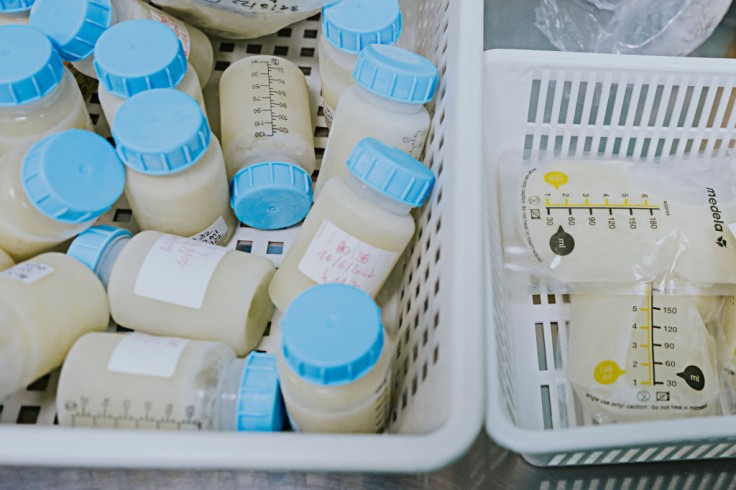
Breast milk is undeniably the best source of nutrition for infants, providing them with essential antibodies and nutrients crucial for their growth and development.
While nursing directly from the breast is an ideal way to feed your baby, there are situations when pumping breast milk becomes necessary. Whether you're returning to work, experiencing low milk supply, or simply looking to share the feeding responsibilities, getting started with pumping can be a game-changer.
According to What To Expect, determining the optimal time to start pumping breast milk depends on your unique circumstances.
Some new moms begin pumping shortly after birth to facilitate breastfeeding or stimulate milk production, especially if their baby is unable to nurse immediately. However, others may choose to wait a few weeks to allow breastfeeding to establish before introducing pumping. By the time your baby is 4 to 6 weeks old, breastfeeding should be well-established, affording you sufficient time between feedings to pump and store extra milk.
If you're planning to return to work, it's advisable to start pumping two to three weeks in advance, enabling you to become familiar with the process and build up a supply of stored milk. Ultimately, do what works best for you and your family's needs.
In this comprehensive guide, we will delve into the techniques, tips, and invaluable advice to help new moms embark on their pumping journey successfully.
Tips for Getting Started with Pumping Breast Milk
Double Pumping: Efficient and Time-Saving
One of the first steps to consider when getting started with pumping breast milk is investing in a double pump. Double pumping refers to the use of a breast pump that allows you to express milk from both breasts simultaneously. This technique offers numerous advantages, including increased milk production, quicker pumping sessions, and a more efficient emptying of your breasts. By opting for a double pump, you can save valuable time and establish a sufficient milk supply.
Pump After Nursing: Boosting Milk Production
As recommended by Healthline, to maximize your milk supply, it is recommended to pump after nursing sessions. This extra pumping session stimulates your breasts to produce more milk and helps build up a surplus supply for future use. Although it may seem counterintuitive to pump when you've just finished nursing, this technique signals your body to produce an increased volume of milk over time.
Use the Right Equipment: A Crucial Investment
Investing in the right pumping equipment is key to ensuring comfort, efficiency, and successful milk extraction. When selecting a breast pump, consider factors such as adjustable suction levels, portability, ease of cleaning, and compatibility with different flange sizes. Additionally, using breast shields that fit properly can prevent discomfort and nipple damage. Conduct thorough research or consult with a lactation specialist to identify the most suitable equipment for your specific needs.
Massage Your Breasts: Enhancing Milk Flow
Massage techniques can significantly aid in improving milk flow and optimizing milk extraction during pumping sessions. Gently massaging your breasts before and during pumping helps stimulate milk ejection reflexes and encourages a more efficient emptying of the breasts. You can use your hands or a warm compress to apply gentle circular motions or light pressure towards the nipple. Experiment with different massage techniques to find what works best for you.
Stock Up Early: Be Prepared
Preparing for the pumping journey well in advance is a prudent step for new moms. Stocking up on essentials such as breast milk storage bags, nursing bras, and comfortable pumping attire can save you from unnecessary stress and last-minute shopping trips. Create a dedicated space for pumping, ensuring it is clean, private, and well-stocked with any additional supplies you may require, such as nipple cream and breast pads.
Establish a Pumping Routine: Consistency is Key
According to Baby Gooroo, establishing a regular pumping routine is crucial for maintaining milk supply and optimizing pumping sessions. Try to set aside specific times during the day when you can dedicate yourself to pumping without interruptions. Consistency plays a significant role in signaling your body to produce milk at certain times, helping you meet your baby's needs and preventing discomfort caused by engorgement.
Maintain a Healthy Diet: Nourish Yourself and Your Baby
Maintaining a healthy diet is essential for breastfeeding moms, as it directly affects the quality and quantity of breast milk produced. Ensure you consume a balanced diet rich in fruits, vegetables, whole grains, lean proteins, and healthy fats. Staying hydrated by drinking plenty of water throughout the day is also vital for optimal milk production. Consult with a healthcare professional or a registered dietitian for personalized advice on nutrition during your breastfeeding journey.
Try Lactation Cookies and Supplements: Natural Boosters
In addition to a healthy diet, some moms find that incorporating lactation cookies and supplements into their routine helps enhance milk production. Lactation cookies often contain ingredients like oats, brewer's yeast, and flaxseed, which are believed to promote milk supply. Similarly, certain herbal supplements, such as fenugreek and blessed thistle, have been used for centuries to support lactation. Before trying any supplements, consult with your healthcare provider to ensure they are safe and suitable for you.
Related Article: Baby Stroller Safety Tips for Hot Summer Days